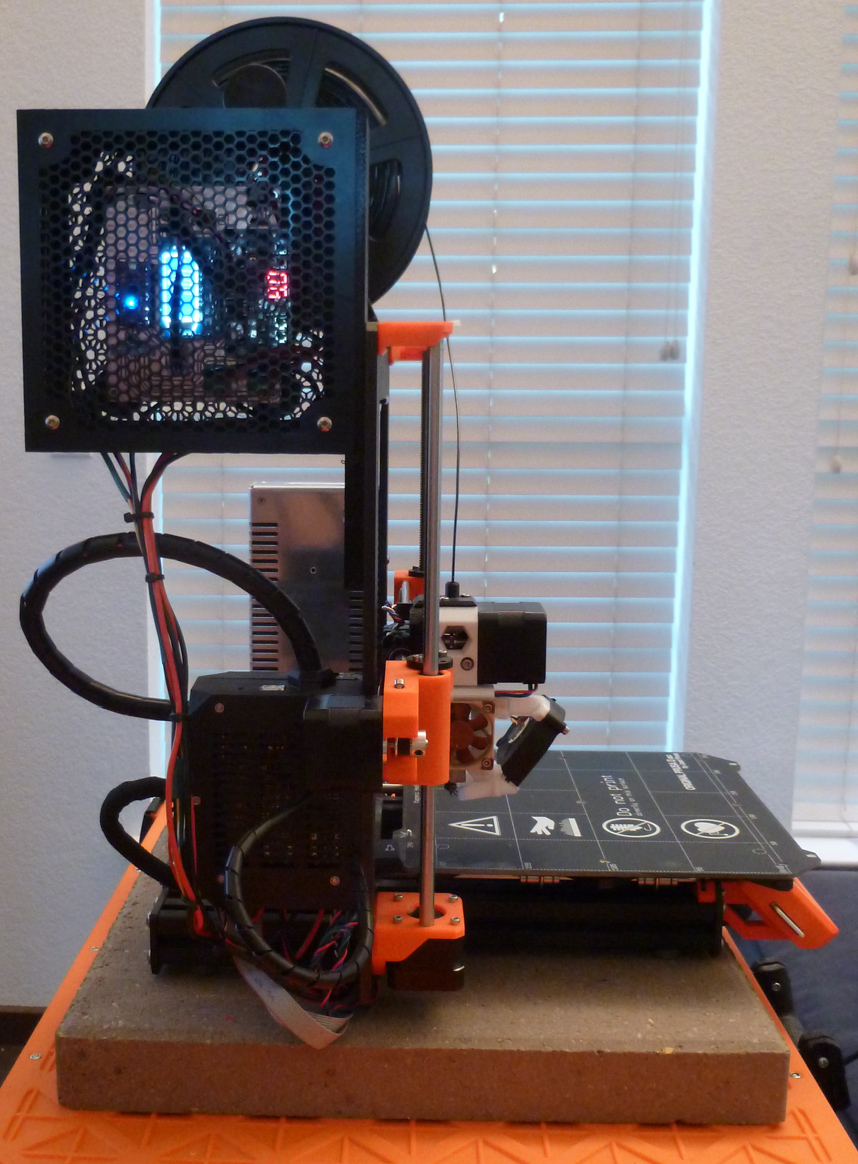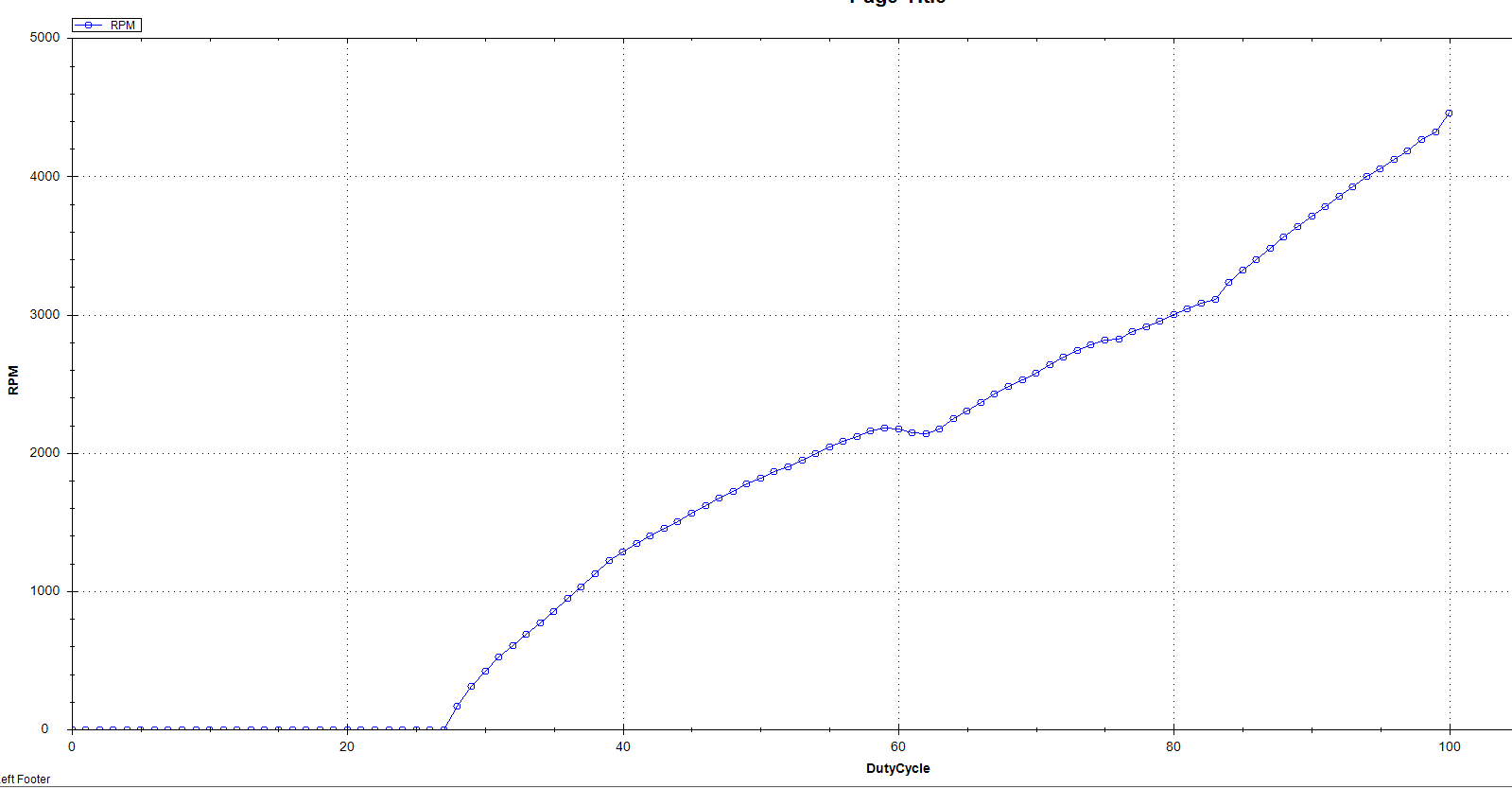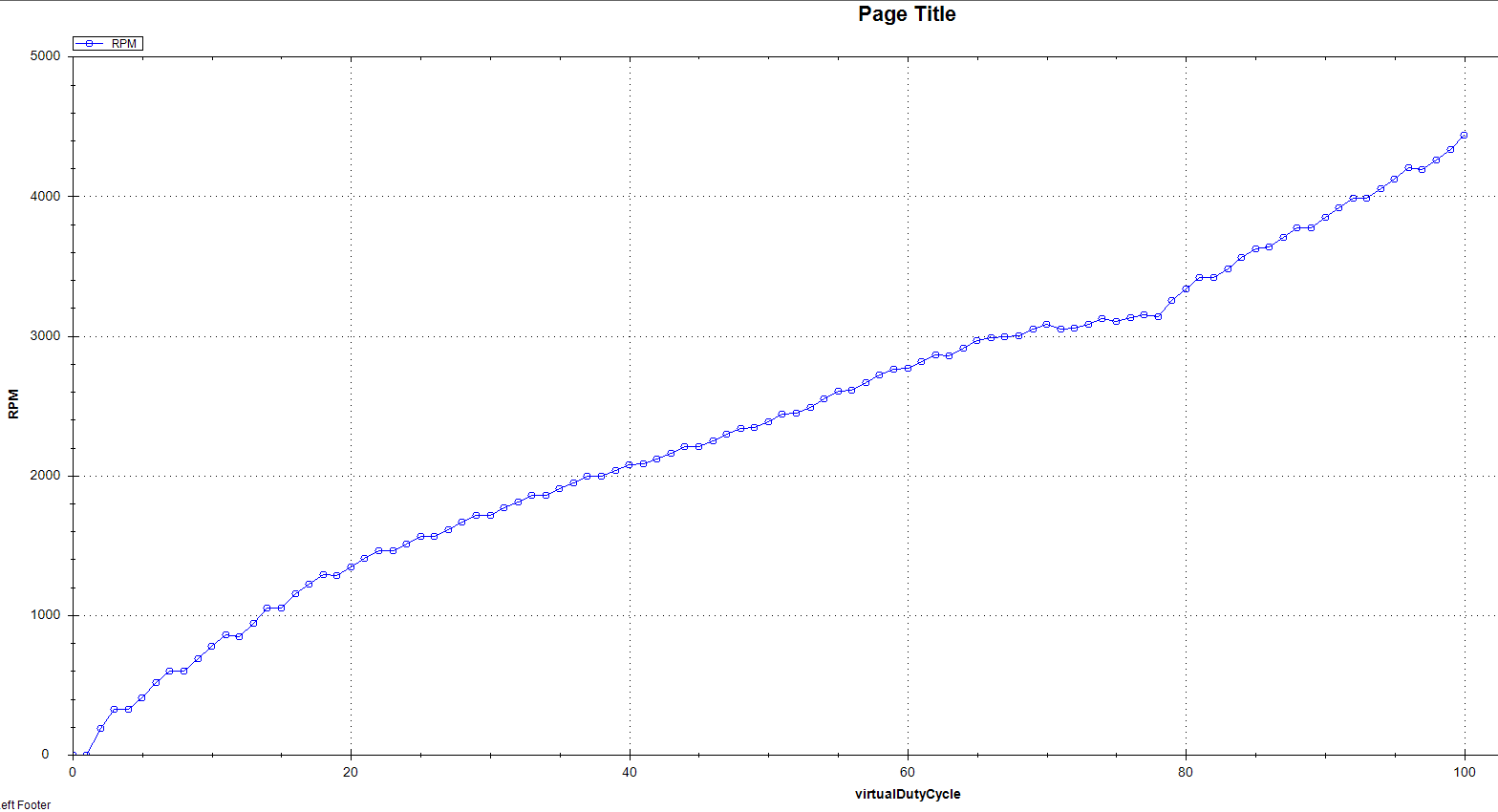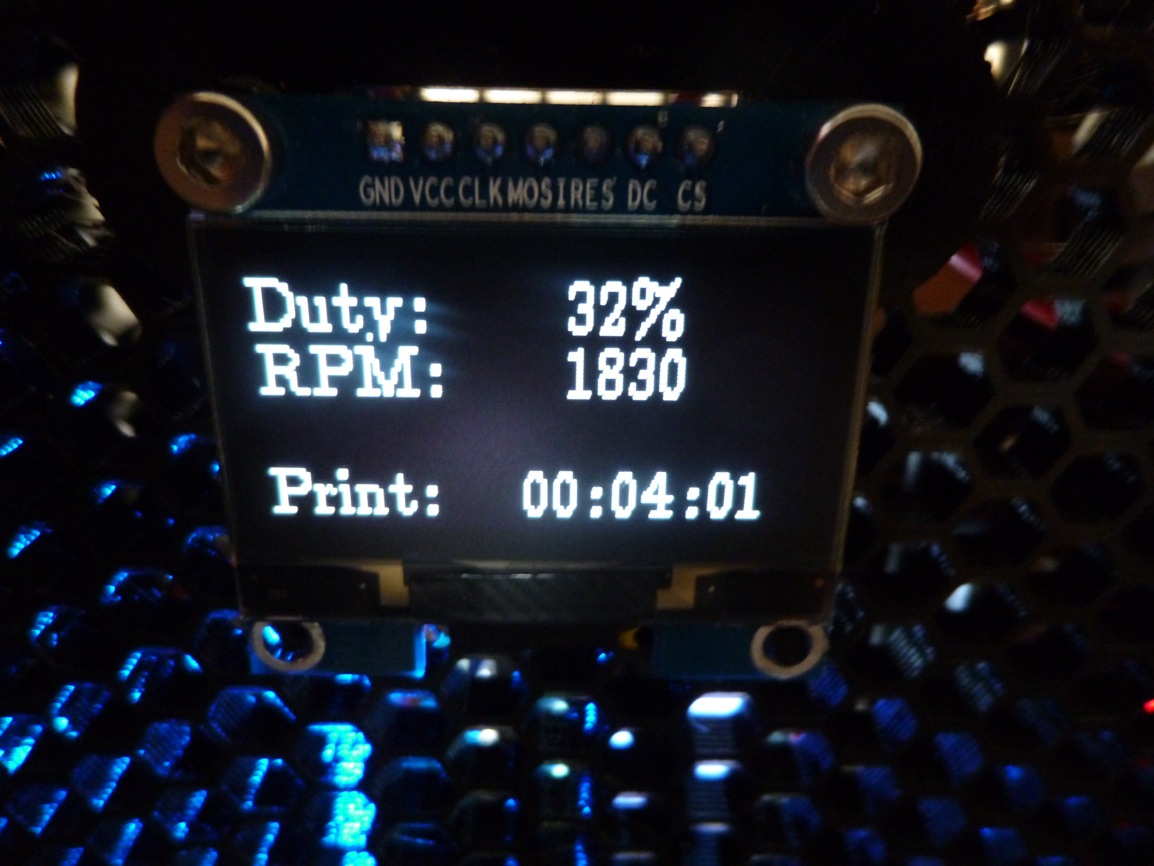Re: Quieting the R3 blower design
Version 1 completed and operational!
If someone has ideas on better cable management, I'm all ears. It's my first attempt, but it seems to work.
In addition to ventilation, the honeycomb also allows me to read the frequency and duty cycle on the internal LCD display, should I wish to. 😀
Re: Quieting the R3 blower design
I'm really impressed by all the work to quiet blower.
Here are a couple of useful references for pwm control of DC fans (and issues reading the tach).
Low side pwm is easy because the transistor can be controlled without a level shifter (the fet gate is referenced to the source terminal)
But, as it's been pointed out here, the tach output is then modulated buy the PWM as well.
Seems like the super nifty solution would be to find a 4 wire fan and add a little circuit with one of the fan driver chips.
Alternately, there may be a chip that interfaces with a 3 wire fan and reports back clean tach signals.
I have not looked through the board schematic to see exactly how the einsy deals with the tach signal.
It's possible that there's a chip out there that "just" does what's needed, but a quick check at digikey turned up more results than are easy to sort.
http://www.analog.com/en/analog-dialogue/articles/how-to-control-fan-speed.html
https://www.maximintegrated.com/en/app-notes/index.mvp/id/1784
Re: Quieting the R3 blower design
Last night I tried to find on AliExpress a small board that does just this, but without luck.
Now im playing with a Raspberry Zero and the pigpio library ( http://abyz.me.uk/rpi/pigpio/python.html ) to get a decent pwm signal reading (PWM Monitor). Once you have this, the library can also be used to generate a pwm signal (Wave PWM 2). This then can be run on your pi that runs OctoPi already. I'd prefer a separate small board solution though.
By the way. once your hear this pwm noise, nothing blocks it. You indeed hear it through the whole house. It's driving me NUTS 😉 Wheeeeeeeeee
Re: Quieting the R3 blower design
I collected data on the RPM that corresponds to each duty cycle level. Then, I plotted it:
Is there a good way to make it linear?
Frequency is 7kHz.
Here's the raw data:
DutyCycle,RPM
100,4460
99,4322
98,4265
97,4187
96,4126
95,4053
94,3997
93,3924
92,3858
91,3783
90,3709
89,3635
88,3561
87,3479
86,3399
85,3323
84,3235
83,3109
82,3084
81,3043
80,2999
79,2952
78,2914
77,2877
76,2824
75,2814
74,2785
73,2739
72,2690
71,2638
70,2576
69,2528
68,2478
67,2425
66,2363
65,2300
64,2246
63,2171
62,2141
61,2148
60,2171
59,2181
58,2159
57,2117
56,2083
55,2040
54,1992
53,1946
52,1902
51,1863
50,1818
49,1773
48,1724
47,1671
46,1616
45,1561
44,1503
43,1452
42,1402
41,1343
40,1281
39,1219
38,1129
37,1031
36,946
35,854
34,773
33,691
32,606
31,522
30,424
29,309
28,167
27,0
26,0
25,0
24,0
23,0
22,0
21,0
20,0
19,0
18,0
17,0
16,0
15,0
14,0
13,0
12,0
11,0
10,0
9,0
8,0
7,0
6,0
5,0
4,0
3,0
2,0
1,0
0,0
Re: Quieting the R3 blower design
With enough data collection and analysis, I suspect it would be possible to synthesize a true linear relationship between duty cycle and blower RPM by using a mix of PWM frequencies to compensate for the highly granular duty cycles of the hardware.
However, short of that, an easy thing to do would be to map a virtual duty cycle onto an actual duty cycle that's in a useful range. In this way, the duty cycle behaves in a way that is more intuitive and more in-line with what the slicer expects.
So, doing that with a 7Khz PWM frequency, the plot looks like:
and the mapping details are:
VirtualDutyCycle,mappedActualDutyCycle,RPM
100,100,4439
99,99,4337
98,98,4262
97,97,4194
96,97,4204
95,96,4123
94,95,4055
93,94,3986
92,94,3987
91,93,3915
90,92,3851
89,91,3775
88,91,3771
87,90,3706
86,89,3636
85,89,3626
84,88,3560
83,87,3481
82,86,3416
81,86,3415
80,85,3337
79,84,3255
78,83,3138
77,83,3149
76,82,3130
75,81,3106
74,81,3124
73,80,3086
72,79,3056
71,78,3051
70,78,3084
69,77,3046
68,76,3002
67,75,2994
66,75,2988
65,74,2966
64,73,2911
63,72,2857
62,72,2863
61,71,2819
60,70,2765
59,70,2758
58,69,2717
57,68,2662
56,67,2611
55,67,2604
54,66,2546
53,65,2488
52,64,2444
51,64,2440
50,63,2387
49,62,2345
48,62,2339
47,61,2294
46,60,2248
45,59,2206
44,59,2207
43,58,2160
42,57,2119
41,56,2081
40,56,2078
39,55,2035
38,54,1992
37,54,1992
36,53,1948
35,52,1904
34,51,1856
33,51,1855
32,50,1808
31,49,1768
30,48,1712
29,48,1713
28,47,1663
27,46,1615
26,45,1563
25,45,1562
24,44,1511
23,43,1461
22,43,1464
21,42,1408
20,41,1348
19,40,1286
18,40,1291
17,39,1223
16,38,1152
15,37,1051
14,37,1050
13,36,942
12,35,845
11,35,858
10,34,777
9,33,689
8,32,598
7,32,597
6,31,514
5,30,408
4,29,325
3,29,323
2,28,188
1,27,0
0,27,0
This, then, is Version 3.
Re: Quieting the R3 blower design
My Raspberry measurements are all over the place, then again that is not so strange looking at the crappy signal shape... Pullup resistor (internal) and 4.7nF did not help 🙁
Would it not be easiest to put a resistor in front of the switching FET to limit the current (so it does not get hot) and make it switching fast by enabeling the code?
Does anybody know if the MOSFET is easy to desolder and where the thing is located?
Re: Quieting the R3 blower design
My Raspberry measurements are all over the place, then again that is not so strange looking at the crappy signal shape... Pullup resistor (internal) and 4.7nF did not help 🙁
Would it not be easiest to put a resistor in front of the switching FET to limit the current (so it does not get hot) and make it switching fast by enabeling the code?
Does anybody know if the MOSFET is easy to desolder and where the thing is located?
Aside from the schematic, this is all that I've ever been able to find:

I'm afraid you'll have to sleuth out the answers you want using a multimeter and the schematic.
Re: Quieting the R3 blower design
Repeating myself: The easiest way to quiet the fan is using a much much lower PWM frequency. In Configuration.h, comment out #define FAST_PWM_FAN and comment in #define FAN_SOFT_PWM. That will take care of the noise and even helps with getting the fan started at low RPM.
Would it not be easiest to put a resistor in front of the switching FET to limit the current (so it does not get hot) and make it switching fast by enabeling the code?
No, it just makes the problem worse, no matter how you define "front". The FET becomes hot because of the switching losses, and the more sluggish the driving signal of the FET is, the worse is the problem; an additional resistor is not exactly helping in this situation. Putting an resistor at the output is just burning energy, likewise not exactly helpful.
Does anybody know if the MOSFET is easy to desolder and where the thing is located?
The Einsy board is not really tinker-friendly. No extra space, fine-pitched SMDs allover, and there is always some connector which is in the way of the solder iron. All the information regarding the PCB is on GitHub: https://github.com/ultimachine/Einsy-Rambo/tree/1.1a/board/Project%20Outputs .
Re: Quieting the R3 blower design
Here is what the OLED displays in verison 4:
It displays the duty cycle, as measured from the Einsy, and it displays the RPM, as measured from the fan tachometer.
It also displays the cumulative time that the fan has been running. So, if you turn the fan on at the beginning of your print (even to something very small, like 200RPM), and you turn the fan off at the end of your print, then this number will show the total time required to finish your print, even if you don't come to pickup your print until hours or days after it has finished. This is information that the current Prusa firmware fails to provide, but that I want to know.
Re: Quieting the R3 blower design
Solved 😀
Thanks Dreide; today I went the easy way and compiled firmware to have in Configuration.h:
// #define FAST_PWM_FAN
#define FAN_SOFT_PWM
Great instructions are here: https://github.com/prusa3d/Prusa-Firmware on how to compile it.
My first firmware crashed as I did not edit platform.txt correctly, the 2nd firmware crashed as it was the latest development version BUT my 3rd try succeeded, based on the current stable firmware code.
Result: no more noise from the front fan!
RE: Quieting the R3 blower design
Guys keep in mind the current limitation when PWM:ing these "large" mosfets at high freqencys. The RFP30N06LE as mentioned earlier has a gate capaticance (at 5v) of 34 nC. Running mosfet at 7khz would require like 240 mA. A smaller mosfet and/or mosfet driver would be a good idea to be able to crank up the frequency properly.
RE: Quieting the R3 blower design
I have read this thread and love what you all have done. I am in process to by a delta 24v 3pin
Model: BUB0524HHB
There are no mush spec on this one. Anyway i am going to huck it up with my Mk3s+ to get better cooling.
Thanks for all knowledge you all provided here.





